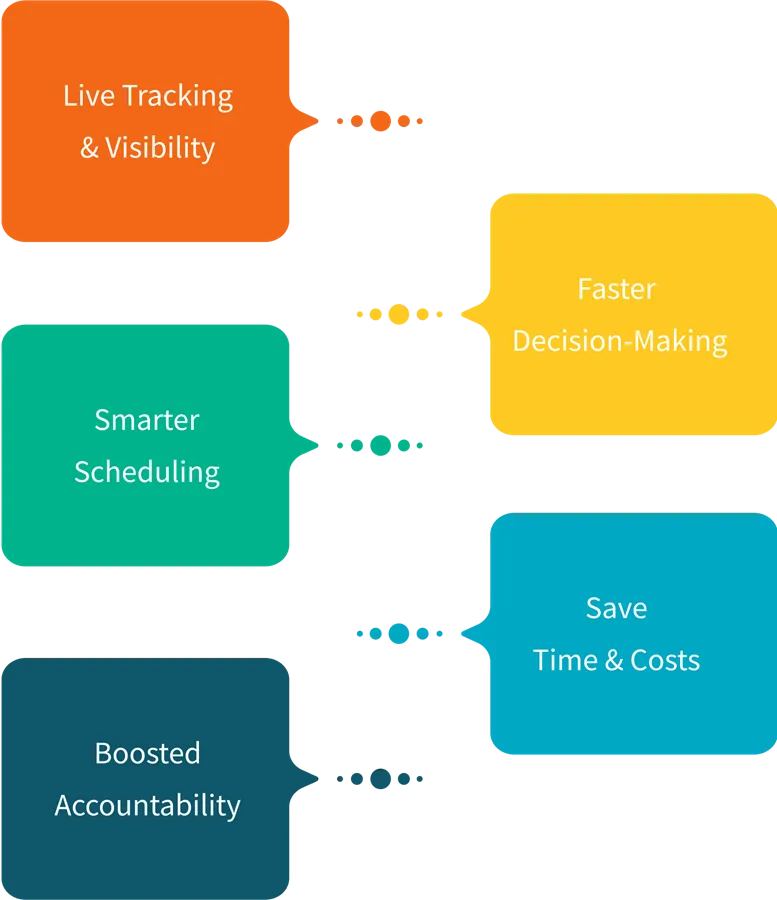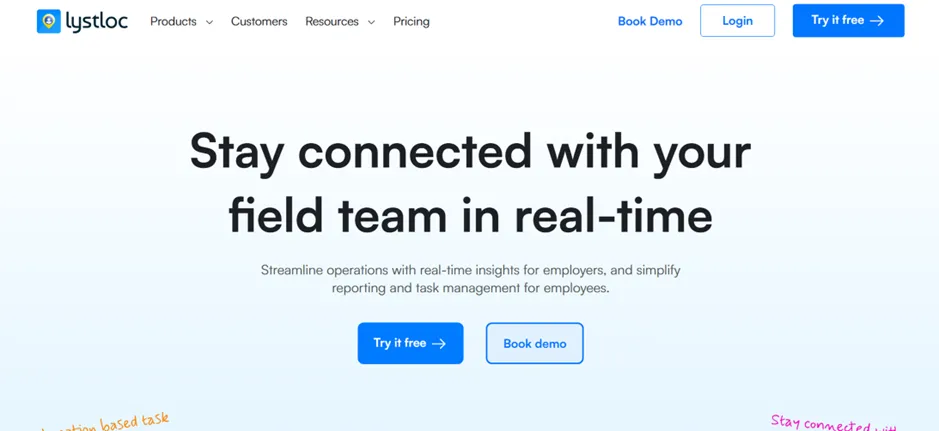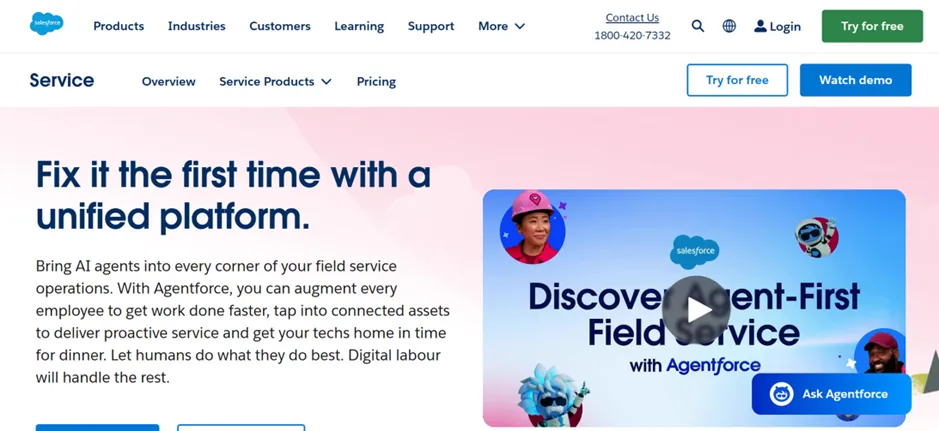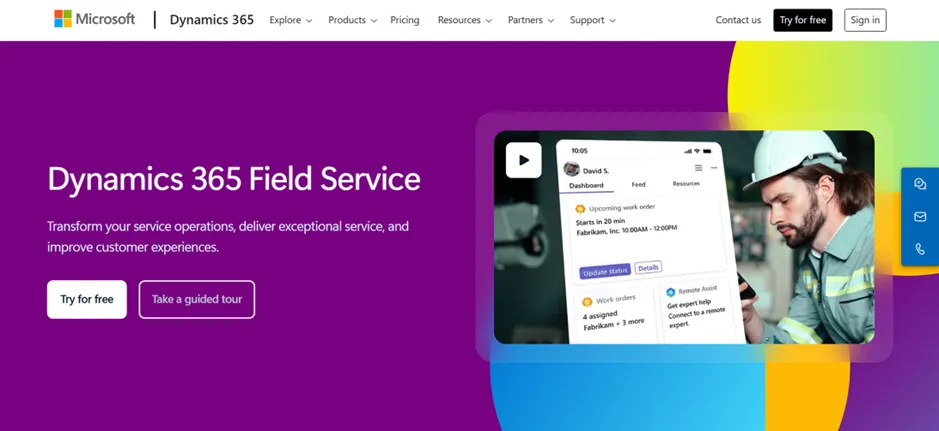The field teams play a significant role in sales generation, service execution and maintaining the operations going beyond the office doors. But any attempt to coordinate a mobile workforce, without the proper tools, tends to lead to miscommunication, delays and a lack of visibility. And this is where Field Force Automation (FFA) enters the picture, it offers businesses a more intelligent way of tracking, controlling and empowering field people. FFA goes far beyond real-time task assignment, location tracking, and automatic reporting, bringing scattered field operations together to form a well-organized, high-performing system. This blog will help you know what Field Force Automation is, its most important features, the benefits it provides, and how to select the most appropriate solution for your business in 2025.
What is Field Force Automation?
Field Force Automation (FFA) refers to the process of automating and digitally transforming the workflow of employees who operate outside the office, commonly known as field staff. This is achieved using mobile applications, cloud-based software, and GPS-enabled technologies. Field staff typically include professionals such as sales representatives, service technicians, delivery personnel, and healthcare workers, whose roles require mobility and real-time connectivity.
FFA tools offer communication, task management, location tracking, performance monitoring, and reporting in real-time. Field Force Automation enables businesses to become more productive, accountable, and eliminate operational bottlenecks and delays, as well as make better and informed decisions based on accurate and real-time field insights, as it replaces manual tasks such as paperwork, phone check-in, and spreadsheets.
Why Do Businesses Need Field Force Automation?
There are several organizations whose workforces operate outside the office. Without proper tools, it's difficult to manage these field teams. Managers might not be aware of the location of employees and their activities. This may result in delays and confusion.
Field Force Automation (FFA) helps resolve this issue. It uses apps, GPS, and real-time updates. Managers are able to monitor activities, view locations, and receive immediate reports. This helps to make work faster, clearer, and organized.
FFA not only helps reduce errors and enhance service. It makes teams stay on track and businesses grow. FFA is an intelligent, quick and easy solution for any company with field staff.
Key Features of FFA Software:
Field Force Automation software is loaded with powerful tools that can be used to manage remote teams efficiently. The following are the key features that promote performance and productivity.
- Real-Time Location Tracking - Monitor the location of your field workers with GPS. It provides efficient route optimization, accountability, and timely visits.
- Smart Task Management - The ability to assign tasks by location or urgency, schedule work efficiently and monitor progress is all possible with a single dashboard.
- Mobile Access with Offline Mode - A mobile app allows its field workers to receive tasks, clock in, and send updates even when offline. They sync up their data as soon as they are back online.
- Automated Reports and Insights - Get real-time reports on employee performance, hours and accomplished tasks. Visual dashboards help with fast decision-making.
- Proof of Work - Employees can capture signatures, photos, or OTPs as real-time proof of task completion, ensuring transparency and accountability.
- Seamless Integrations - Easily connects with CRM, payroll, and HR systems to streamline workflows and keep data consistent across teams.
Key Benefits of Field Force Automation:
Field Force Automation provides companies with smarter methods to manage mobile teams, monitor performance, and reduce expenses. The following are the key benefits that make it a necessity in modern fieldwork.

Real-Time Tracking and Visibility
The field force automation software can provide real-time updates of employees' location, task status, and their everyday performance. Now, managers can track the position of their team with field force tracking software and mobile GPS, knowing where their employees are located and what they are working on without the need for manual follow-ups. A field force manager achieves better control, and employees become focused and accountable.
Increases Productivity Through Smart Scheduling
The field force scheduling software allows managers to assign tasks in real-time and plan routes efficiently. This software will enable them to cut down idle time, eliminate overlaps, and ensure on-time visits. Field sales automation is a smooth procedure because it enables teams to accomplish more in less time.
Better Accountability and Performance Monitoring
A powerful field force management tool has capabilities such as time-stamped log-in, GPS tracking, and live dashboards. This increases transparency and enables the field staff to be responsible for their work. Field force solutions enhance performance tracking without micromanagement, whether it is sales, service or delivery.
Smarter Decision-Making with Instant Insights
Field force management software provides a real-time analysis and report with just a single click away. Managers can determine the performance gaps, quantify productivity, and make decisions quickly. These are the vital insights of any sales automation force that needs to remain competitive and flexible.
Cost and Time Savings for Growing Businesses
When using a field force app, there is less paperwork, manual reports, and follow-ups. The minimized travel routes and automated processes reduce the fuel cost, administrative overhead and labour cost. The most effective field force management software also integrates with CRMs and payroll systems, which saves time and cuts down errors across departments.
Common Challenges and How to Overcome Them:
Despite the best field force automation software, some challenges might be encountered when businesses roll it out. The following are the most typical challenges and the ways to overcome them.
Resistance to Change
The workers can be unwilling to change the traditional approaches to a new field force administration system. Others might fear being watched at all hours or be unfamiliar with the technology.
How to Overcome:
Choose an easy-to-use field force application and show how it can cut down on their daily routine. Conduct brief training sessions to demonstrate the hours saved on reporting and manual updates. Building trust at the early stages helps in a smooth transition.
Connectivity Issues in Remote Areas
Field staff working in remote regions often face connectivity issues. With low signal strength, it can be difficult for them to update tasks consistently using field force tracking software.
How to Overcome:
Select a field force automation system that is offline competent. Even though employees are not connected to the internet, they can still record their working hours offline, and when they get online, the data will be synced automatically.
Data Privacy Concerns
Field staff working in remote areas often struggle with poor network connectivity. Due to low signal strength, they may find it difficult to consistently update tasks using field force tracking software.
How to Overcome:
Be clear about why and what data is collected. Employ a safe field force management application, which is compliant with data protection policies. Role-based controls should enable managers and employees to perform the relevant operations only.
Training Requirements
Not every employee can easily adapt to new tools introduced in the workplace. This is especially true for those who are unfamiliar with digital platforms or scheduling software.
How to Overcome:
Provide step-by-step instructions and easy user manuals. Begin with simple things, such as how to log in, check the tasks, and mark attendance. Most of the field force software programs provide demo support, videos, or onboarding assistance; use them.
Industries that Benefit from FFA:
Field Force Automation is not limited to a single industry, but it is an effective solution in any industry that deals with workforce outside of the office. These are some of the most important industries in which field force automation software delivers the greatest effect:
- Sales & Marketing: Track visits, manage leads and enhance the conversions with the help of field sales automation.
- Logistics & Transportation: Track the routes and deliveries with field force tracking software.
- Healthcare: Field force tools enable real-time tracking of patient visits with real-time field reporting.
- Construction: The field force management system allows assigning tasks and tracking site progress.
- Retail & FMCG: Track stock availability and in-store product visibility using field force apps.
Top Field Force Automation Tools in 2025
Companies in diverse fields are shifting towards highly effective field force automation software to enhance tracking and management of their mobile workforce. Below are five of the most reliable tools that help companies improve productivity, accountability, and real-time tracking.

Time Champ is an efficient and comprehensive field force automation software allowing business to take total control over their remote workforce. Besides monitoring field work, it also enhances performance through productivity features.
Key Features:
- Real-time GPS tracking and route monitoring.
- Live activity tracking with screenshots and app usage.
- Mobile app with offline check-in and updates.
- Automated regular productivity reports.
- Smooth integration with CRM, HRMS and payroll.
- Task assignment, timesheet logging, and project management.
Lystloc

Lystloc is a mobile-first field force automation application that is customizable to sales, service, and delivery teams. It provides real-time location tracking, live check-ins, meeting logs and digital attendance all from a smartphone. Real-time dashboards and insights based on the data allow businesses to track visits, tasks and the daily activity without being too involved in the process of the field managers. Most suitable for Location tracking, sales team management, and live meeting reports.
FieldAware

FieldAware is a sophisticated field service automation solution applicable in such industries as construction, manufacturing and telecom. It helps dispatch managers in scheduling jobs, assigning tasks and real-time monitoring of the availability of the technicians. The mobile application enables field workers to update job status, find work orders and take pictures to prove service, even without internet access. It makes communication efficient and enhances performance between distributed teams. Ideal for task scheduling, service technician tracking, and job coordination.
Salesforce Field Service

This field force automation system is developed as a part of the Salesforce ecosystem and provides direct access to customer data, CRM, and customer requests by building images of the field service staff. It also allows tracking technicians in real-time, smart dispatching, work orders, and mobile job updates. Businesses can offer quicker, smarter, and more personal customer service through AI-directed recommendations and Salesforce phone integration, which connects seamlessly with email automation and scheduling platforms for streamlined communication across all channels. Most suitable for large service teams, CRM integration, and AI-driven task management
Microsoft Dynamics 365 Field Service

Microsoft field force management solution provides end-to-end service automation by integrating IoT, AI insights, and predictive maintenance. It enables companies to make appointments, allocate technicians based on availability and skills, and manage asset conditions. Its advanced analytics and machine learning capabilities equip decision-makers with precise, real-time insights for better outcomes. Best for enterprise-level field operations, IoT-enabled automation, and predictive service.
Conclusion
Field Force Automation has become a growing necessity to companies seeking to streamline their remote work, enhance accountability as well as the productivity of teams. When the right solution is found, then companies may trace real-time activity, control tasks, and make decisions based on data.
Although several tools provide solutions that are industry-specific, Time Champ is the most extensive and performance-based field force management software. It includes advanced functions, such as live monitoring, GPS tracking, generate reports automatically, and work with smooth integrations, thus allowing businesses to develop a culture of accountability and productivity regardless of where their teams work.
Frequently Asked Questions
Field Force Automation is designed to monitor and support employees who work in the field, such as sales teams, delivery staff, or survey agents. Field Service Management is more specific to service-based teams like technicians or maintenance workers. It focuses on task scheduling, dispatching jobs, and managing customer service requests.
No. Small and mid-sized businesses can also use it. Many field force apps, like Time Champ, offer flexible plans that work well for teams of any size.
Yes. Good field force software has an offline mode. Employees can update tasks and attendance without internet. The app will sync everything when they’re back online.
Can it help with employee performance reviews? Yes. Field force management software tracks time, tasks, and attendance. These reports help managers review performance with real data.









